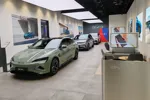By Philip Nothard, retail and consumer editor, CAP
In a market that continues to throw challenges at the retail new and used car dealer one of the major concerns is the ongoing rise in list prices and the impact this has on the consumer’s cost to change.
It goes without saying that in the current economic climate the cost to change is now a more critical issue for the consumer than before.
But there are two slightly odd dynamics at work, both of which are actually adding to the cost to change.
One is rapidly rising list prices, at a time when the consumer is more price-sensitive than ever.
The other is apparently generous financial incentives, designed to combat that problem, but which tend to ripple down through the used market to devalue the existing vehicle parc.
If we consider the supermini segment – a key retail sector – the first issue is highlighted by the stratospheric rise in list prices over recent years.
Since April 2009 the average list price has risen 41% from £11,874 to £16,582 in April 2012: an average monthly increase of 1%, at a time when disposable incomes have been falling.
Even with the strong supermini values we have seen at various periods during the last three years the inevitable result has been an increase in the average headline cost to change from £7,008 in April 2009 to £10,315 today.
This constant increase in the cost to change shows no sign of reversing.
According to CAP’s own short-term forecasts in Black Book Plus, average used values in this sector are expected to slip a further 5% over the coming months. Without list price cuts, the gap will continue to widen, at least on paper.
This rise in list prices has been universal across all segments.
Dealers are certainly frustrated by this, as our own recent research has indicated.
Asked whether list price increases are negatively impacting on their business 68% of respondents said that they were.
Of course, the issue is more complex than simply rising list prices versus falling used values.
Against a background of ever-increasing retail prices there is a plethora of incentives always on offer to tempt consumers into the showroom.
But these too can add to the pressures which create a growing cost to change.













Login to comment
Comments
No comments have been made yet.